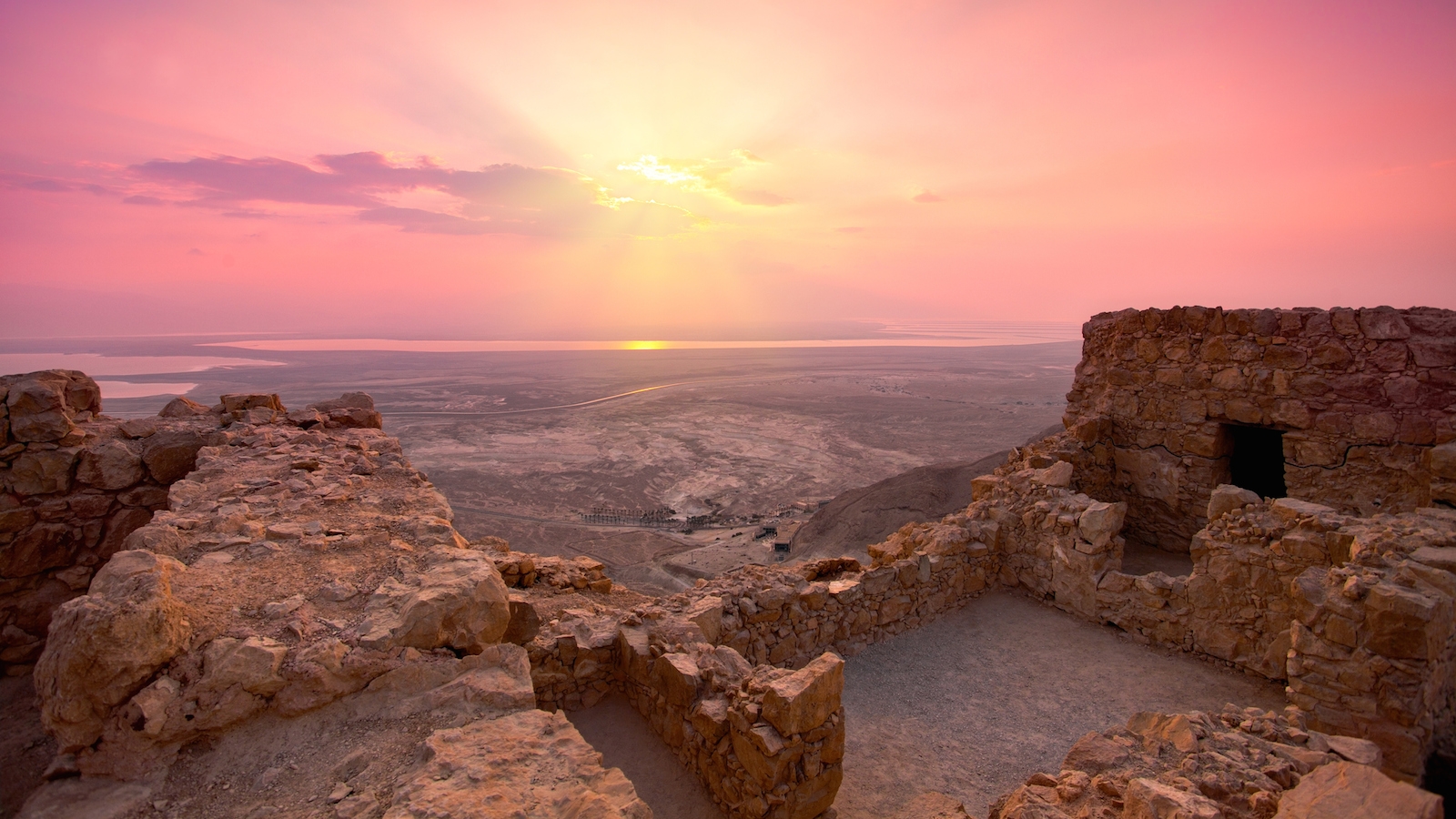The [Great Revolt…] can be said to have been going on from the day the Romans first set foot in the Land of Israel [… ] yet full-scale revolt did not break out until 66 C. E.
The proximate cause was a series of acts by the procurator Gessius Florus (64‑66 C.E.) which displayed disrespect for Jewish religious sensibilities. Widespread strife broke out in Jerusalem, and, as a consequence, some of the priests decided to suspend the offering on behalf of the emperor, an action tantamount to declaring open revolt.
The efforts of King Agrippa II, the leading priests, and some of the Pharisees to stem the incipient revolt failed. Jerusalem was soon in the hands of the rebels. This led, in turn, to uprisings throughout the country, where Jews battled their non‑Jewish neighbors for the upper hand. Cestius Gallus, the governor of Syria, attempted to put down the revolt, but his forces were routed by the Jews.
Military commanderswere now assigned to the entire country, to prepare for the expected Roman attack. Among them was the future historian Josephus, who commanded Jewish forces in the Galilee. Judging from his experiences, duly appointed commanders had to contend with competition from a variety of popular, even semi‑messianic, leaders.
With your help, My Jewish Learning can provide endless opportunities for learning, connection and discovery.
As this illustrates, the rebels did not constitute a uniform group. Many different forces were involved in the revolt. Among them were the Sicarii, known in the years before the war for having assassinated collaborators with the Romans with short daggers (Latin sica) which they kept hidden under their garments. The followers of Simeon bar Giora regarded their leader as a messianic figure, and in his name seem to have committed violence not only against the Romans but against other groups of rebels. The Zealots may have had their origins in the groups that had continuously struggled against Rome since the beginning of Roman rule in Palestine, but according to many scholars they only became an organized faction at the start of the revolt.
The inability of the various rebel forces to work together was one of the major reasons why the revolt did not succeed. At the same time, it must be recognized that ultimately, even if united, the Jews could not have stood up to Rome’s superior military forces and unlimited resources.
The Roman emperor Nero (54‑68 C.E.) appointed the experienced general Vespasian to lead the attack on Judea. With the help of his son Titus, Vespasian assembled three legions and several contingents of auxiliary forces totaling some sixty thousand men. By the end of 67 C.E., Vespasian had taken Galilee. Josephus himself surrendered to the Romans at Jotapata.
When the Galilee was lost, some of the rebel groups led by popular messianic figures moved south to join the forces defending Jerusalem. They soon took a leading role there, displacing the aristocratic leaders whose policies had led to the loss of Galilee. Before long, however, civil strife broke out among the various factions in Jerusalem.
Meanwhile, Vespasian was busily subjugating the rest of the country. In 68/69 C.E., there was a brief respite while Vespasian awaited the outcomeof the death of the emperor Neroand the struggle for succession which then took place. In 69 C.E., the Roman legions of the East decided to declare Vespasian emperor. Soon afterwards he was accepted at Rome as well. He returned there and left his son Titus to prosecute the war in Palestine. All the while, those besieged within Jerusalem continued to undercut their own position by their inability to join together.
By Passover of 70 C. E., Titus had massed a large force around Jerusalem while Jewish factions inside the city were killing one another. As Titus’s battering rams began to strike, the factions finally came together. One by one the Romans breached the walls of the city, gaining control of the entire city except for the Temple area. By building siege ramparts, Titus was finally able to take the Temple Mount itself.
According to Josephus, Titus planned to spare the Temple from destruction, but it was nonetheless engulfed in a conflagration and could not be saved. The ensuing slaughter of men, women, and children and the leveling of the city which followed dealt a lasting blow to Jewish life in the Land of Israel.
This was not the end of the war. While the Temple treasures and the rebel leaders were paraded in Rome, the Romans had to mop up small bands of Jewish fighters who had taken refuge in other areas of the city, and to take several fortresses scattered through the land where rebel forces were holding out. With the capture of Masada in 73 C.E., the last resistance to Rome was crushed. As the Roman commemorative coins stated, “Judea had been captured.”
[Masada was an isolated tower of rock at the edge of the Judean desert that was fortified in the Hasmonean period. According to Josephus, the 960 Jews who were stationed there committed suicide rather than fall to Rome there in 73 C.E. While the rabbis disregarded the Masada story, it became a treasured tale for the modern nation of Israel, as well as a premier contemporary archeological site.]
Reprinted with permission from From Text to Tradition: A History of Second Temple and Rabbinic Judaism (Ktav).



